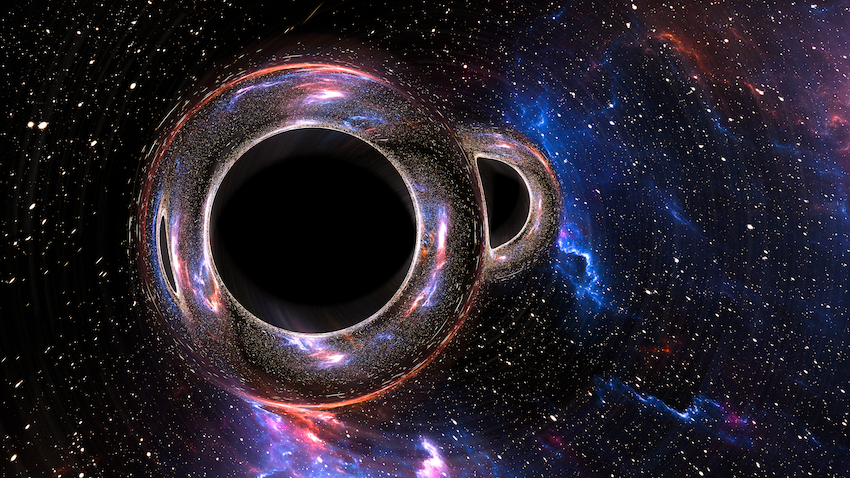The T2K experiment in Japan, in which the INFN is highly involved, and the NOvA experiment in the United States have conducted their first joint analysis, providing some of the most precise measurements ever obtained of neutrino oscillations. The results, published today in Nature, combine ten years of T2K data (collected since 2010) and six years of NOvA data (collected since 2014), reducing the uncertainty in the differences between neutrino mass squares to less than 2% and setting strong constraints on CP symmetry violation (a difference in behaviour between particles and antiparticles). This achievement marks an important step towards understanding the matter-antimatter asymmetry in the universe and demonstrates the value of collaboration between “competing” yet complementary experiments.
“The joint analysis effort has brought benefits to both collaborations”, said Patricia Vahle, co-spokesperson of the NOvA scientific collaboration. “We have gained a much better mutual understanding of the strengths and challenges of the different experimental setups and analysis techniques”.
Both T2K and NOvA are long-baseline neutrino oscillation experiments: each sends an intense beam of neutrinos that passes through a near detector and a far detector. T2K sends its neutrino beam 295 kilometres, from Tokai to Kamioka (hence the name “T2K”). Tokai hosts the J-PARC accelerator complex, while Kamioka is home to the Super-Kamiokande neutrino detector, a huge tank containing 50,000 tonnes of ultrapure water located one kilometre underground. NOvA (NuMI Off-axis νe Appearance), on the other hand, sends a neutrino beam 810 kilometres from Fermilab, near Chicago, to a 14,000-tonne liquid scintillator detector in Ash River, Minnesota. By exploiting the substantial differences in oscillation distance and average neutrino energy between the two beams, the experiments were able to obtain more comprehensive information about neutrino behaviour.
“The T2K-NOvA analysis required an intense and fruitful exchange between the two communities. It was necessary to fully understand the data from both experiments and to analyse them within a common framework that appropriately accounted for systematic uncertainties in the measurements”, noted Andrea Longhin, professor at the University of Padua, INFN associate, and member of the T2K collaboration. “INFN plays a leading role in managing the T2K near detector, taking care of the TPCs (Time Projection Chambers), which measure the energy and nature of the particles produced by neutrino interactions”.
Neutrinos, extremely abundant yet incredibly difficult to detect, change type, or “flavour”, as they travel through space. Electron, muon, and tau: each of these three flavours is not associated with a well-defined mass, but rather a mixture of the three possible “mass states” of neutrinos. It is precisely this mixing that causes a neutrino to “oscillate” from one flavour to another during its motion. One of the great mysteries in neutrino physics is to determine the ordering of the masses of these three states. There are two possible orderings, conventionally referred to as “normal” and “inverted”. In the normal ordering, two mass states are light and one is heavy; in the inverted ordering, two are heavy and one light. In the normal case, muon neutrinos are more likely to oscillate into electron neutrinos, but muon antineutrinos are less likely to oscillate into electron antineutrinos. In the inverted case, the opposite occurs. However, it is possible that the difference in behaviour between neutrinos and antineutrinos depends not only on the mass ordering, but also on intrinsic differences between the two, a phenomenon known as CP (charge–parity) symmetry violation. This violation implies that neutrinos do not behave like their antiparticles and, if confirmed, could help explain why, after the Big Bang, matter prevailed over antimatter, giving rise to the universe as we know it.
The combined results from NOvA and T2K do not favour one ordering over the other. If the ordering turns out to be normal, the current results would not fully clarify the question of CP symmetry, requiring additional data. If the ordering were inverted, the results would provide evidence for CP symmetry violation.
“Neutrino physics is a strange field. It’s very difficult to isolate the effects”, explained Kendall Mahn, co-spokesperson of the T2K scientific collaboration. “Combining the analyses allows us to isolate one of these effects, and that’s progress”.
The combined analysis has produced one of the most precise measurements of the difference in mass between the neutrino mass states, a quantity known as Δm²₃₂. With an uncertainty below 2%, this new value will make it possible to compare results from other experiments with great precision and to verify whether the theory of neutrino oscillations is complete. In the future, in addition to NOvA and T2K – the only currently operating long-baseline neutrino experiments – the Deep Underground Neutrino Experiment (DUNE), under construction in the United States, and Hyper-Kamiokande, under construction in Japan, will also seek to answer the remaining open questions, thanks respectively to a greater sensitivity to neutrino mass ordering and high-statistics measurements of CP symmetry violation. The INFN has an active and leading role in both projects.
“The INFN is already at the forefront of the Hyper-Kamiokande experiment. It has recently led the construction of a new version of the TPCs (High-Angle TPCs) for the near detector – already operational and destined to play a key role when Hyper-Kamiokande begins in 2028 – and is also engaged in essential activities for the far detector, including the development of the readout electronics, multi-PMT light detectors, and a significant portion of the computing resources”, concluded Longhin.






